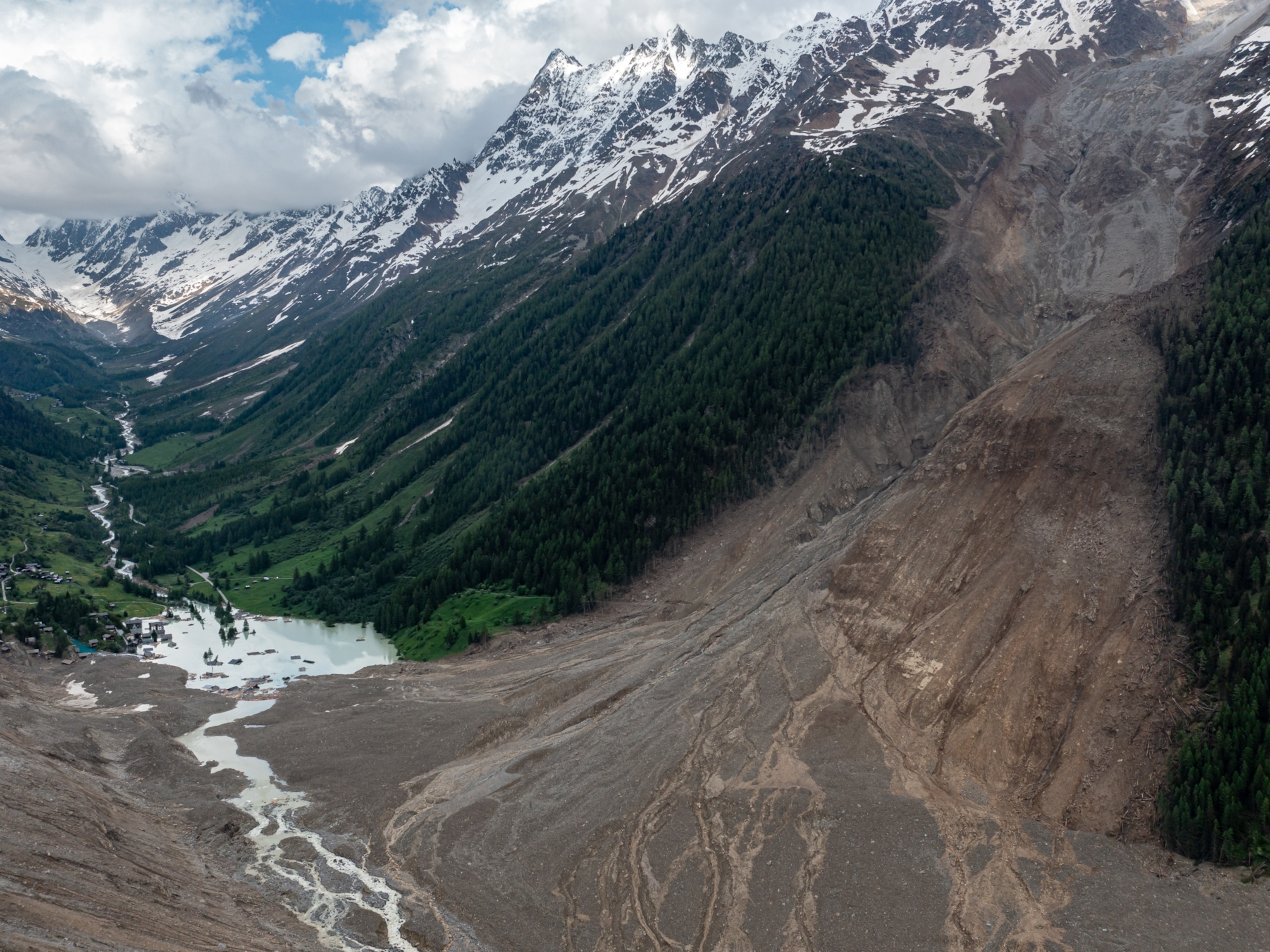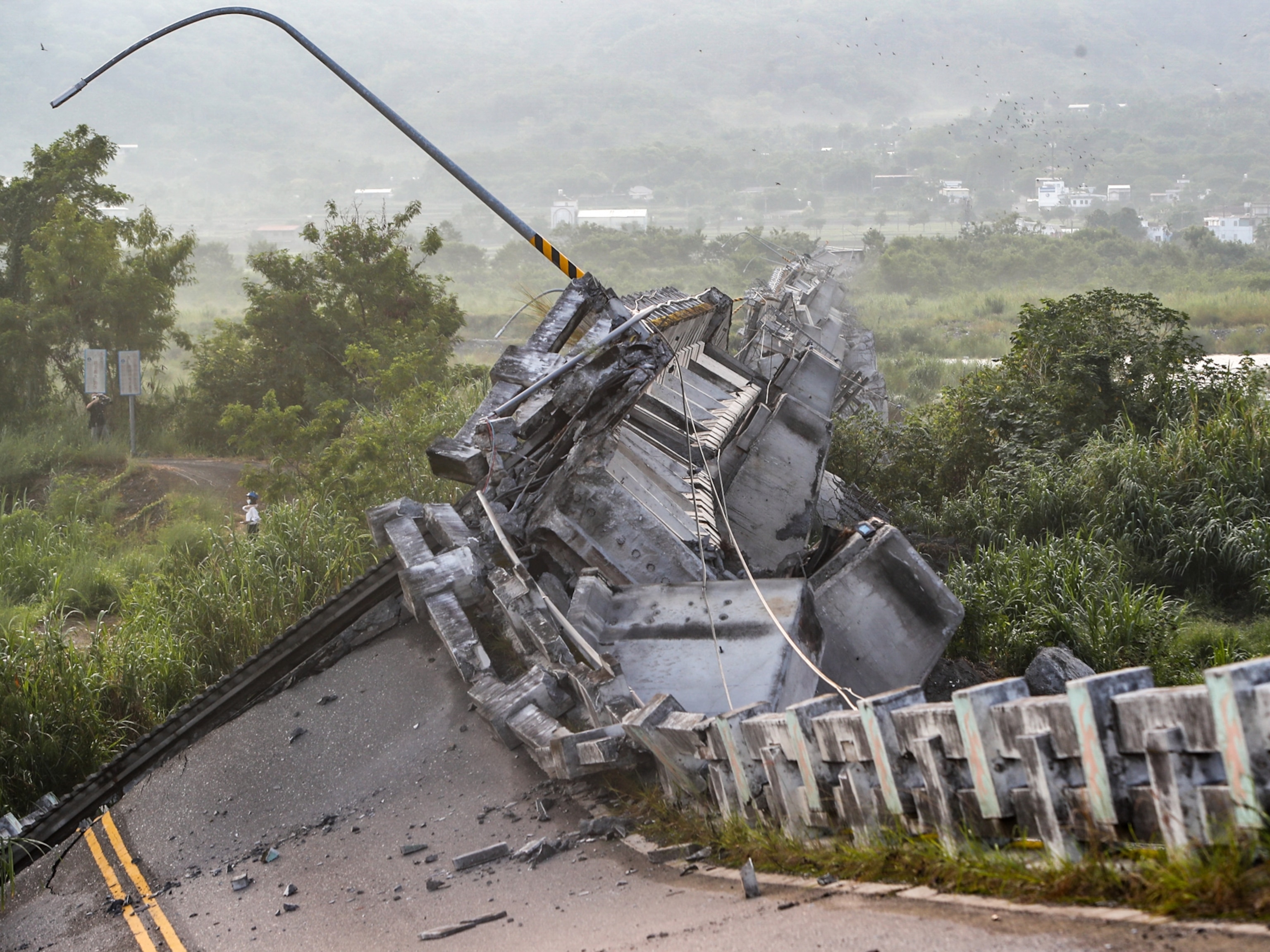Dramatic Video Shows Deadly Tsunami Hitting Greenland
Seismic activity the size of a 4.0 magnitude earthquake was recorded as the tsunami hit.
Update, August 1: Findings published in a report about the June 17 tsunami revealed the wave crested as high as 300 feet when it hit one fjord before dissipating, making it one of the tallest in recorded history. A reconnaissance trip to Greenland led by an environmental engineer at the Georgia Institute of Technology found that the "mega-tsunami" was caused by an unusually catastrophic landslide so large it generated a seismic signal, leading to confusion about the tsunami's cause. In Greenland, these steep cliffs are a mix of rock and ice. As global temperatures warm, and the ice melts, massive landslides may increase.
Video from Greenland shows a powerful tsunami striking an inhabited part of the island's western shore. The disaster that ravaged the island late Saturday has left four people presumed dead, dozens injured, and 11 homes washed away from the remote region near the small town of Nuugaatsiaq.
The footage captured by local Greenland news outlets shows the tumultuous, grey waters spilling onto the rocky, neighborhood shores. Boats and other debris were pushed inland from the force of the waves. Thirty-nine people were evacuated from the area, which had a population of 84 during the most recent census.
Footage of tsunamis is rare, as they often strike suddenly. Some have been known to reach speeds of up to 500 miles per hour—the speed of a jet plane.
The majority of these natural disasters are caused by underwater earthquakes, and a 4.0 magnitude earthquake was recorded in the region on the night of the tsunami. Glacial earthquakes in Greenland's arctic region caused by giant ice sheets cracking and breaking have increased with glacial melt. Earthquakes along the region's western coast, however, are rare. Some geologists, however, have theorized that a powerful landslide that ruptured the island moments before the tsunami hit could have triggered the event. (Learn more about the destructive power of landslides.)
A landslide over 3,000 feet long and 900 feet wide came cascading down a cliffside at Karrat Fjord, just south of where the tsunami struck. Writing for the American Geophysical Union's The Landslide Blog, Dave Petley, the pro-vice-chancellor at the University of Sheffield, commented that the tsunami's exact trigger was yet to be determined:
"It remains unclear as to whether this landslide was triggered by the reported earthquake, or whether the seismic event was the signal from this landslide. My sense remains that the latter is the most likely, but we await details of the seismic signal to know."
Video showing the concave cliffside reveals the landslide caused a large amount of rock to fall into the ocean. Petley determined from images of the landslide that it was "deep seated" and "high in volume" of material. Another unstable slope discovered adjacent to the landslide has geologists concerned. The Joint Arctic Command, which led the search and rescue mission, also warned another dangerous landslide was possible.
Naval ships in the area will continue monitoring the slope for signs of another possible slide.
Knowing the warning signs of a tsunami can be the difference between life and death. Read more tsunami safety tips here.


















